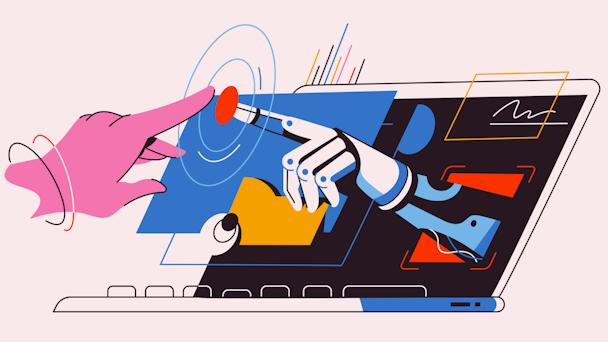Can AI redeem programmatic and make advertising beautiful again?
The burgeoning world of artificial intelligence promises to reinvigorate the digital media space, writes InMobi's Abhay Singhal.

/ Adobe Stock
The best advertisements tell stories. But after decades of investment and innovation, programmatic hasn’t delivered on its initial promise to tell personalized stories at scale. If anything, programmatic has made advertising ugly. However, it’s clear that generative artificial intelligence (AI) has the potential to reverse that trend. Here’s how.
Programmatic advertising, at its essence, solves an engineering challenge. Programmatic technology has given the advertising industry true targeting capabilities, greater transparency and better tools for attribution. But the more efficient advertising becomes, the more consumers say they don’t like ads. Frankly, I believe the answer lies in the browser. Instead of delivering personalized creative at scale, programmatic has given us a never-ending blizzard of banner ads.
Advertisement
Scaling ugly banner ads wasn’t a conscious choice, but it’s worth asking how we got here. After all, consumers don’t like banner ads, and as far as advertisers are concerned the format isn’t terribly effective. In fact, my company even tried to break up with the banner ad back in 2015. But guess what? Banner ads are still here, and they represent a significant piece of our business. This begs the question: if everyone wants the banner ad to be dead, why won’t it die?
The answer can be found in creative production. While programmatic technology makes it cost effective to do one-to-one targeting at scale, there’s no corresponding innovation on the creative side that makes it possible to produce personalized creative assets at scale. Up until this moment, the banner ad has been the only feasible way for the supply of creative assets to meet programmatic demand – and we’re talking about a lot of demand.
Next year, US advertisers are projected to spend $168bn on programmatic display advertising, according to eMarketer. Beneath that topline number, advertisers and agencies will spend a lot of money doing relatively simple tasks like resizing banners and performing various localization functions. Even though these tasks require very little creativity, that work is performed manually by tens of thousands of people working in creative production. As programmatic spending increases, creative production teams increase asset output to keep up, but that’s not the same thing as increasing creativity. As a result, as programmatic scales, advertising becomes uglier and uglier.
Advertisement
Generative AI provides an opportunity to disrupt that negative trend. But AI alone won’t improve advertising’s creative production process. How we think about deploying AI tools will matter a great deal. Consider two possible scenarios for deploying AI in creative production.
First, AI is deployed as a cost-cutting tool. Instead of relying on tens of thousands of people to resize and localize banner ads, the AI does it faster, cheaper and at potentially unlimited scale. We’ve already seen disruptive moves like this; a recent news story reported that a fortune cookie company had shifted its creative work from human writers to ChatGPT. That certainly cuts costs, but does it unlock greater creativity? Not really.
In the second scenario, we deploy AI tools to unlock new creative potential. In a recent TED Talk, educator Sal Khan explained how AI tools built for education can offer students personalized tutors. These tools don’t replace teachers or reduce the cost of education; rather, they add teaching capacity to a system already operating at, or near, maximum output. In other words, with AI tools, it‘s possible to meet student demand that wasn’t previously being met due to a lack of teaching resources for one-to-one education.
If advertising adopts the fortune cookie model for AI, we’re in real trouble. Sure, costs will go down, but the product – a compelling story that motivates consumers to make a purchase – will ultimately suffer. After all, reducing costs on a process that already delivers ugly ads will only result in a greater number of ugly ads.
But if advertising borrows from thinkers like Sal Khan, we can achieve an enormous creative unlock. Instead of performing tedious, low-level tasks, creatives can be redeployed to do what they do best: tell great stories. By implementing generative AI into creative production in a thoughtful way, we can finally make the programmatic promise of one-to-one messaging a reality.
Suggested newsletters for you
Abhay Singhal is chief executive officer at InMobi.
